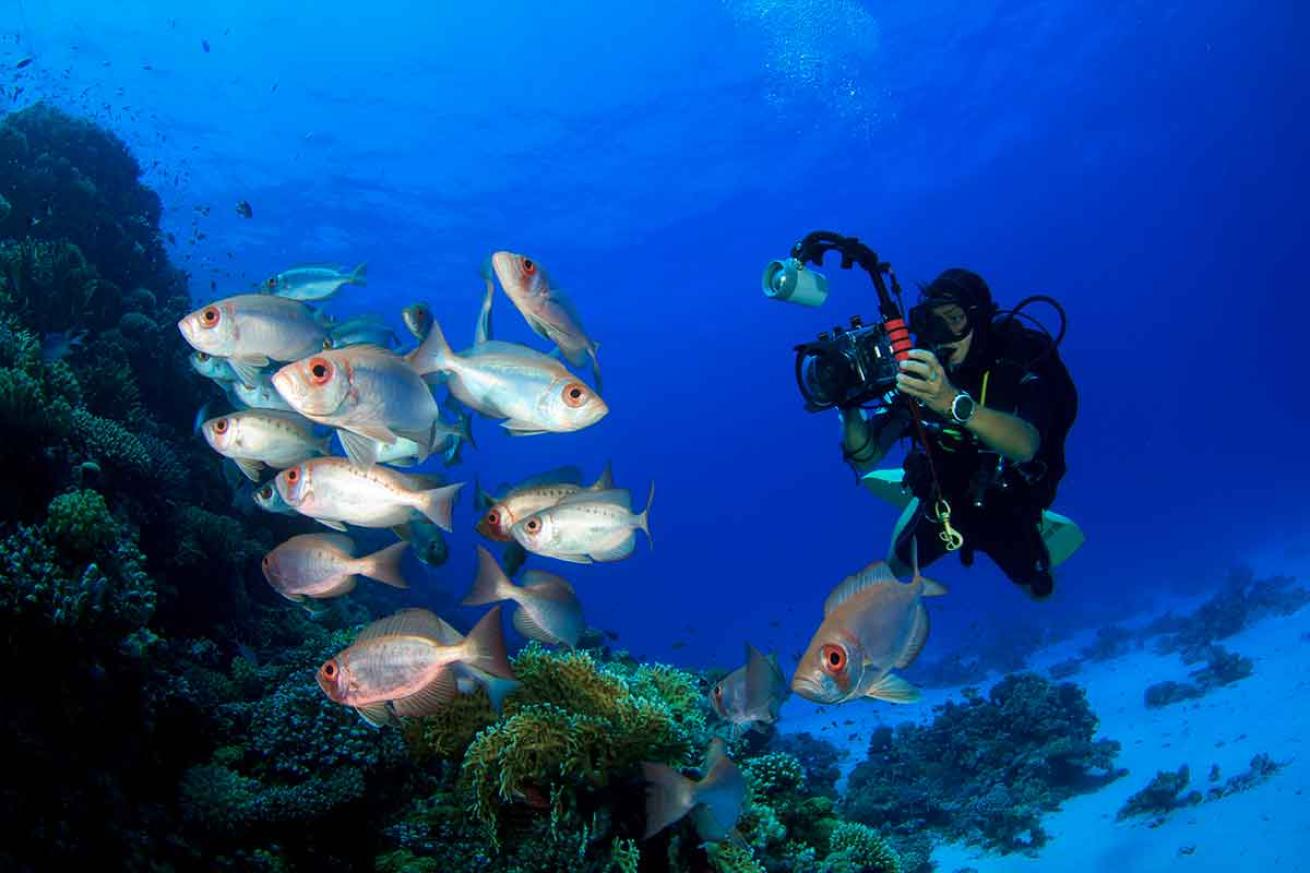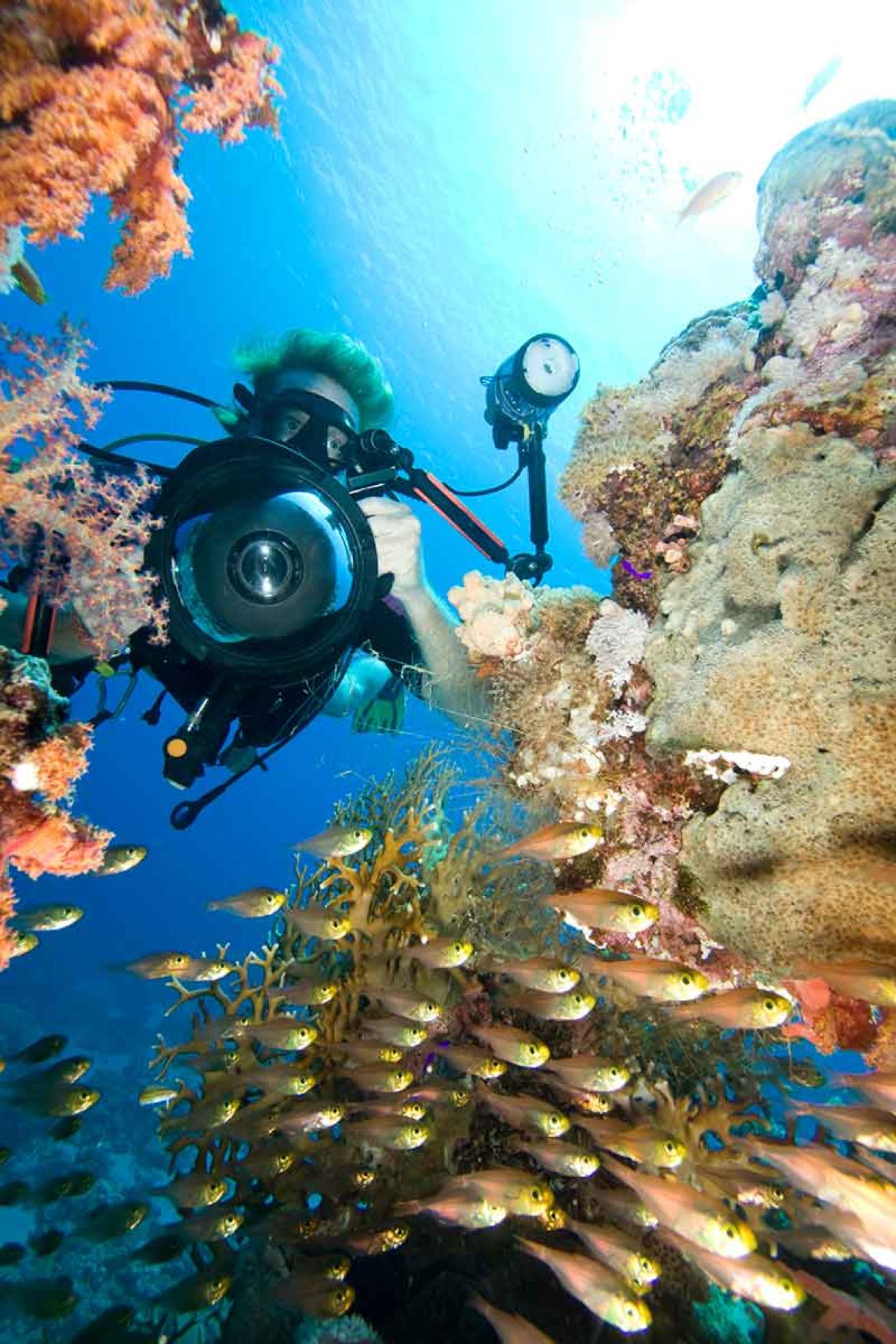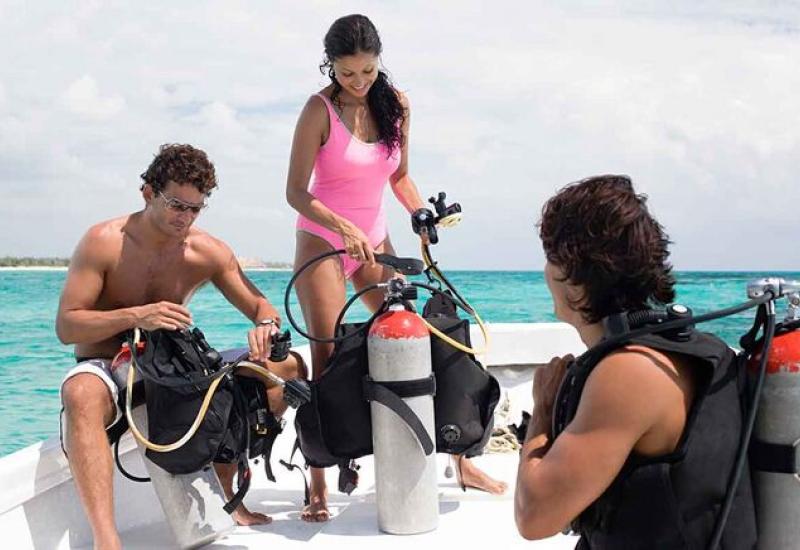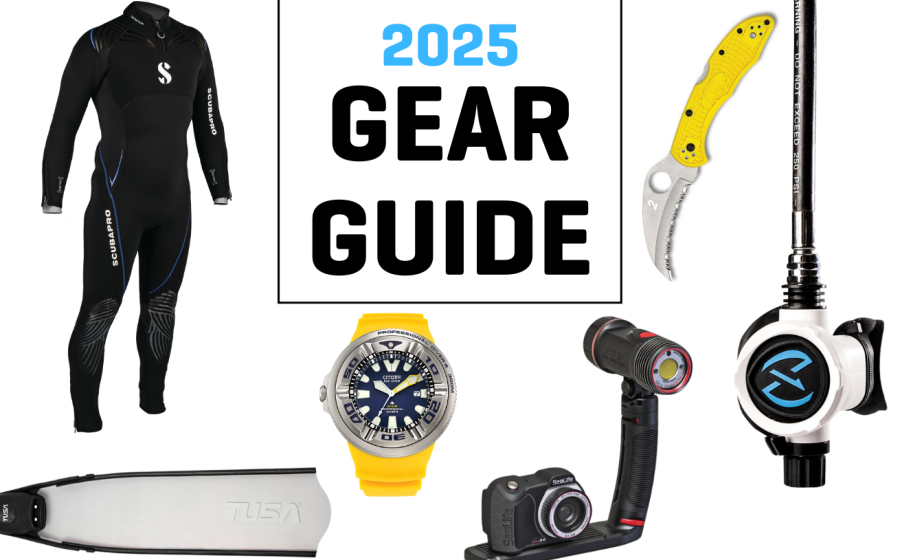Dive Hacks: 20 Underwater Photography Tips and Tricks from the Pros
Scuba divers are always looking for the next tip or trick that will make their dive, flight or entire getaway just a little bit easier. And anyone who's logged a book's worth of dives has their own quirky hacks that you may not have considered. We asked several dive pros for their underwater photography tips and tricks.

iStockphotoUnderwater Photography Tips
"You’re not going to sneak up on anything underwater; just don’t act like a bumbling predatory primate."

iStockphotoUnderwater Photography Tips
"Cherish every encounter — a great image does not happen without everything coming together."
1. Carry spare SD cards or flash drives. If you want to share photos and don’t have an internet connection (when in remote areas or while on a liveaboard), you can put them on the extra flash drives. Most folks will gladly pay to reimburse you for a drive or SD card, especially if they need one in a pinch. — Doris Pfister, Caradonna Dive Adventures group agent and dive instructor
2. When on a liveaboard, pack a power strip to plug in all electronics (phone, land camera battery, underwater camera battery, video battery, etc.). This way, you’re using only one outlet, and not hogging multiple ones. Courtesy goes a long way when you share cramped quarters for a week or more. — DP
3. When trying to get close to wary marine life, don’t stare directly at the animal. It will know. Keep it in your peripheral vision and approach slowly. You’re not going to sneak up on anything underwater; just don’t act like a bumbling predatory primate. — Ethan Daniels, professional underwater photographer
4. Take a picture or video of your hand before or after an epic shot. You can later use this to accurately white balance the image at home. — Byron Kay, owner, Kona Honu Divers, Hawaii Island
5. Make trips dedicated to one animal you want to photograph. The more time spent with the animals on a trip, the better you’ll know their behavior and the better you can anticipate the shot you want. Spending multiple days in the presence of one species also gives you plenty of opportunities to shoot with different light (cloudy, sunny, ambient, strobes) or even with different lenses. At the end of the day you only need to charge your batteries, download your memory card, review images to check what you can do better or differently, and do it all over the next day. — Ellen Cuylaerts, professional underwater photographer
WATCH: How To Care for Your Underwater Camera Before and After You Dive
6. Cherish every encounter — a great image does not happen without everything coming together. If you’re not in the right position to take the shot, just enjoy the encounter. Put the camera aside for a moment, and stop watching through the viewfinder. — EC
7. Lighten your grip on your camera — it’s not a race car! Relax your grip for a steady shot. Also, depress the shutter button without dipping the camera. Blurry shots are often your fault and not the camera’s. — Scott Taylor, owner, A-1 Scuba, Littleton, Colo.
8. Before every dive check the status on your battery(ies). Nothing is more maddening — or preventable — than a dead camera, — ST
9. When photographing in current, carry a stabilizer stick; that way, you can use it to anchor yourself into the sand or rock without disturbing the coral or animal life. — ST
10. When storing camera equipment in the boat’s hold, wrap it in wetsuits, hoods and other neoprene items for extra protection. — Alex Mustard, professional underwater photographer

iStockphotoUnderwater Photography Tips
"Try not to blind your subject with bright lights when photographing a small critter."

iStockphotoUnderwater Photography Tips
"New gear? ... Make sure you’ve read the owner’s manual. And don’t try too many new things at once."
11. If you know a wetsuit manufacturer, ask them to make neoprene pouches for camera items. Storing fragile items in pouches will protect them while they’re packed in your luggage or gear bag. — AM
12. Attach pockets to your wetsuit legs to stow camera accessories when not in use underwater. Or buy shorts with pockets on the thighs to wear over your wetsuit. — AM
13. The most important photo of the day is the one you take before going out diving. It enables you to make sure the camera and strobes have batteries, that you have removed the lens cap, and that you have put in a memory card. — AM
14. Get a vacuum valve for your camera. It will offer peace of mind that you have put everything together correctly before diving. — AM
15. Dive with your dive computer on your camera’s strobe arm. It will be much more in your line of sight, so you can check depth, no deco time and air supply while shooting. Too many photographers discover that they are in deco because they forget to look. — AM
16. On a busy dive boat, leave your housing port cover on until you're in the water, and replace it before handing it to crew when you exit. This helps avoid scratches and damage during transfer, and when placed in a rinse barrel with a bunch of other camera systems. — Karl Shreeves, Technical Diving Executive, PADI
READ MORE: Hand Signals Every Diver Should Know
17. Don’t drip on the camera table. Likewise, don’t dunk your masks in the camera rinse bucket. — Sport Diver Editors
18. Try not to blind your subject with bright lights when photographing a small critter. If you have to use lights, take one or two shots and then give the little guy some peace and privacy. — Margo Peyton, co-owner of Family Dive Vacations and Kids Sea Camp
19. Follow the dive guide. Divemasters are in their local waters year-round and their eyes are trained to find little critters that you may not see. — DP
20. New gear? Take it on a test run before your vacation. Make sure you’ve read the owner’s manual. And don’t try too many new things at once. — SDE








